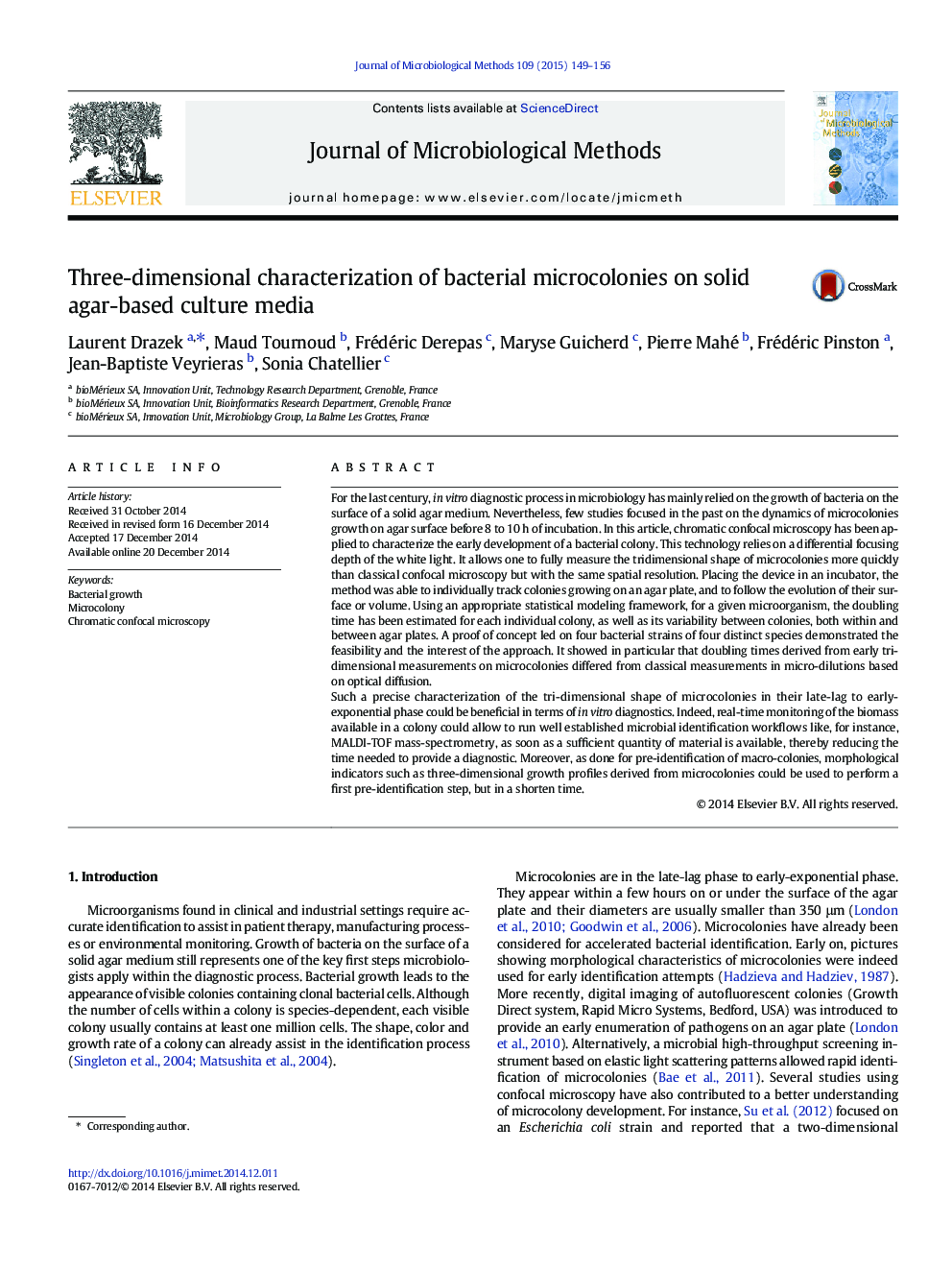| کد مقاله | کد نشریه | سال انتشار | مقاله انگلیسی | نسخه تمام متن |
|---|---|---|---|---|
| 2089901 | 1545934 | 2015 | 8 صفحه PDF | دانلود رایگان |
• Chromatic confocal microscopy was used to characterize microcolonies growth on agar.
• Doubling time was estimated from surface and volume growth profiles within 8 h.
• Doubling time variability between microcolonies and experimental runs were derived.
• Doubling times from topographic data differed from micro-dilution measurements.
For the last century, in vitro diagnostic process in microbiology has mainly relied on the growth of bacteria on the surface of a solid agar medium. Nevertheless, few studies focused in the past on the dynamics of microcolonies growth on agar surface before 8 to 10 h of incubation. In this article, chromatic confocal microscopy has been applied to characterize the early development of a bacterial colony. This technology relies on a differential focusing depth of the white light. It allows one to fully measure the tridimensional shape of microcolonies more quickly than classical confocal microscopy but with the same spatial resolution. Placing the device in an incubator, the method was able to individually track colonies growing on an agar plate, and to follow the evolution of their surface or volume. Using an appropriate statistical modeling framework, for a given microorganism, the doubling time has been estimated for each individual colony, as well as its variability between colonies, both within and between agar plates. A proof of concept led on four bacterial strains of four distinct species demonstrated the feasibility and the interest of the approach. It showed in particular that doubling times derived from early tri-dimensional measurements on microcolonies differed from classical measurements in micro-dilutions based on optical diffusion.Such a precise characterization of the tri-dimensional shape of microcolonies in their late-lag to early-exponential phase could be beneficial in terms of in vitro diagnostics. Indeed, real-time monitoring of the biomass available in a colony could allow to run well established microbial identification workflows like, for instance, MALDI-TOF mass-spectrometry, as soon as a sufficient quantity of material is available, thereby reducing the time needed to provide a diagnostic. Moreover, as done for pre-identification of macro-colonies, morphological indicators such as three-dimensional growth profiles derived from microcolonies could be used to perform a first pre-identification step, but in a shorten time.
Figure optionsDownload as PowerPoint slide
Journal: Journal of Microbiological Methods - Volume 109, February 2015, Pages 149–156
